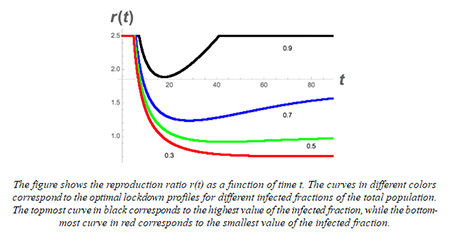 Scientific study has now revealed the effectiveness of a sharp lockdown followed by a gradual release in containing a pandemic situation. Not only that, scientists have also prescribed a roadmap of when to impose lockdown and by how much.
Scientific study has now revealed the effectiveness of a sharp lockdown followed by a gradual release in containing a pandemic situation. Not only that, scientists have also prescribed a roadmap of when to impose lockdown and by how much.
Containing a pandemic requires social distancing, while economic activity essential for the sustenance of the society requires social interaction. Trying to navigate a rational way to steer between these conflicting objectives, scientists from Raman Research Institute (RRI), an autonomous institute funded by the Department of Science & Technology, Government of India have formulated a rational strategy that would take the long-term point of view, nipping outbreaks in the bud.
Their recent work accepted for publication as a Letter in the journal ‘Physical Review E’ is a starting point in considering the economic as well as health costs of a pandemic. The main result of their study points out that the best strategy to follow is one in which a sharp lockdown is imposed, which is followed by a gradual release based on the understanding of exponential growth of disease measured in terms of the reproduction ratio ‘r’.
The analysis by Professor Joseph Samuel of RRI and the International Centre For Theoretical Sciences (ICTS) and Professor Supurna Sinha from RRI uses the simplest epidemic model to arrive at a strategy for navigating the pandemic so as to minimise the economic damage while still containing infections. A key ingredient in their analysis is the use of a “virus time” to describe the progress of the disease. The methods used are classical optimisation procedures used widely in Physics ever since the time of Bernoulli, who himself was one of the pioneers in the use of mathematical models to study disease spread.
The RRI team hopes that their methods may be applied to more realistic models of disease spread to develop a rational strategy for navigating between the twin dangers of disease and deprivation.
Publication link: https://journals.aps.org/pre/accepted/7c072Y07J2810367a3cd0025c859446b05f5d44a4
For further details, Professor Joseph Samuel (sam[at]rri[dot]res[dot]in) and Professor Supurna Sinha (supurna[at]rri[dot]res[dot]in) can be contacted.






























